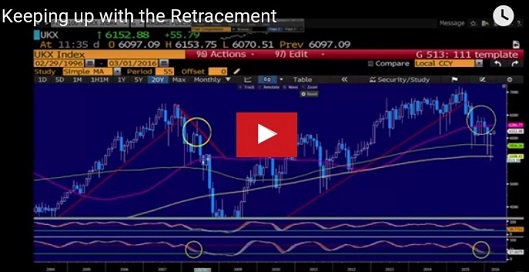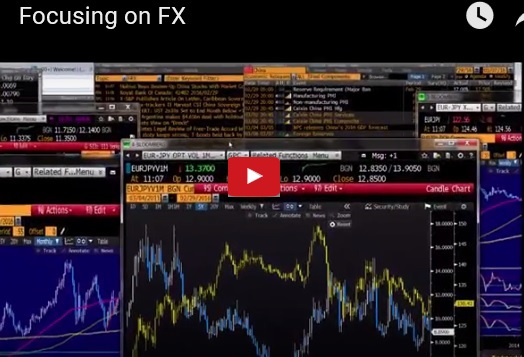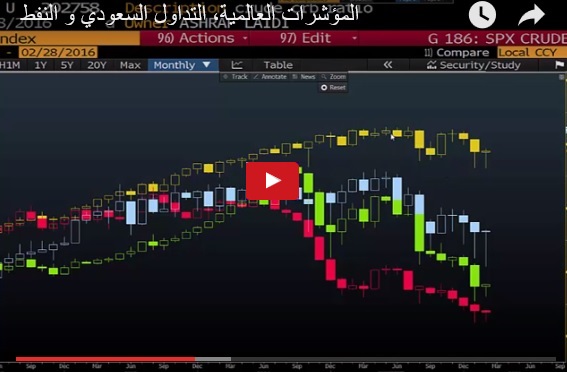Intraday Market Thoughts Archives
Displaying results for week of Feb 28, 2016Two more Breaks
Gold and the euro showed renewed signs of life on Thursday. The Australian dollar was the top performer for the second day while the yen lagged. The Aussie will remain in focus with retail sales due later. Ashraf's Premium trades added a gold trade with 3 charts and 9 fundamental/technical reasons highlighting why the metal can finally break out instead of failing as it did over the last 3 years.
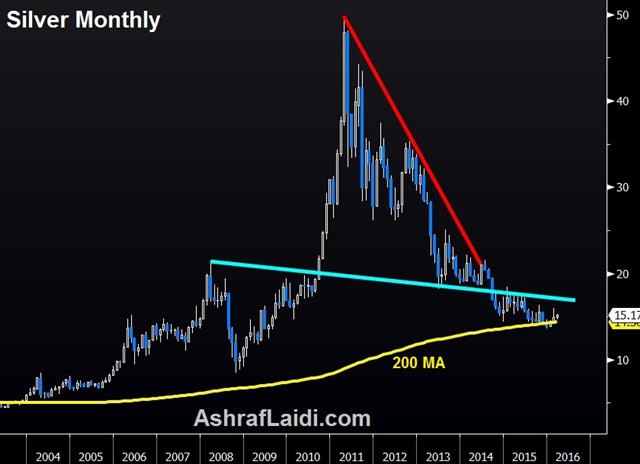
We wrote yesterday about the AUD/USD break of the 200-day moving average. Two things grab our attention today:
1) Gold breaks the wedge
A well-defined consolidation pattern has been unfolding since the Feb 11 high of $1263. In general those patterns break to the upside and that's what unfolded Thursday in a nearly $30 rally. The high of $1268 was also the best level in a year.One cautionary sign is that a breakout a day ahead of non-farm payrolls isn't the most opportune time to get bullish. The measured target of the move is $1350 so patience will still pay.
2) Best day for euro in three weeks
The euro climbed nearly a full cent following a pair of doji stars. Earlier this week, EUR/USD tried to make new lows but couldn't sustain any momentum despite negative headlines and with the late January lows holding. A few retracements are underway including CAD, GBP and AUD; it might be time to add the euro to the list.Looking ahead, the Australian dollar is in focus as it continues to push higher after breaking the 200-day moving average a day ago. The next event to watch is the 0030 GMT release of January retail sales report. The consensus estimate is +0.4% in what could be fresh confirmation that consumers are picking up the slack as the slump in mining continues.
| Act | Exp | Prev | GMT |
|---|---|---|---|
| Retail Sales (JAN) (m/m) | |||
| 0.4% | 0.0% | Mar 04 0:30 | |
| Eurozone Retail Sales (m/m) | |||
| 0.4% | 0.1% | 0.6% | Mar 03 10:00 |
| Nonfarm Payrolls (FEB) | |||
| 190K | 151K | Mar 04 13:30 | |
Ashraf's Webinar Today #w/ FXStreet
Join me for a live webinar today 10:15 Eastern (15:15 GMT/London) --15 mins after the release of services ISM on FXstreet with Dale Pinkert. REGISTRATION LINK.
AUD above 200 DMA
The US dollar ignored an upbeat ADP report in US trading Wednesday and trended lower. Commodity currencies diverged with the Australian dollar leading while the Canadian dollar lagged. Another busy data slate is due in Asia-Pacific trading. The Premium Insights closed out of the AUDJPY long with a 258-pt gain in order to lock up gains and assess the potential for fresh entry ahead of tonight's Aussie trade figures and tomorrow's Aussie retail sales. Another AUD trade remains currently open.
في آخر فيديو: "العملات، النفط و الذهب"
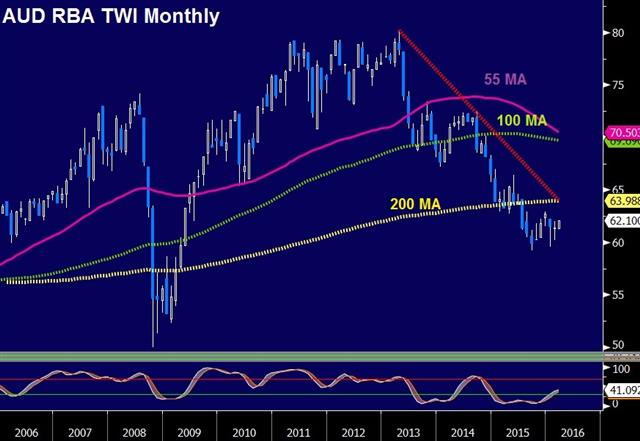
The ADP report showed 214K new jobs in Feb compared to 190K expected and that sent the US dollar to a session high of 114.55 against the yen but it lasted only moments. One reason was a -12K revision to the prior report, another one was that the ADP report has recently been a poor predictor of NFP.
Afterwards, the US dollar continued to deteriorate. Cable, in particular, took advantage. It rose to 1.4094 from as low as 1.3912. The Brexit debate has fallen off the front pages for now and that may inspire a continued bounce.
Separately, the AUD/CAD divergence today is an interesting shift. The Canadian dollar has been in a major retracement phase while AUD was languishing near its long-term low. Or at least it was until today when it surged following a strong Q4 GDP reading. AUD may now take the baton as domestic economic worries ebb.
Technically, AUD/USD broke above the 200-day moving average for the first time since 2014 and also cruised through the February highs. There is a cluster of resistance at the Jan/Oct highs in the 0.7325/85 range but beyond that is some clear sailing. Whether it gets there will depend on how risk assets perform but the 4.3% gain in China yesterday and a second day of gains in the S&P 500 are positive signs. The major hurdle is the data and central bank slate in the next two days.
In the near-term, the data calendar remains busy beginning with Australian trade balance 0030 GMT. Q4 GDP showed falling imports and that's something to watch out for. The consensus is for a $3.2B deficit but a better-than-expected number on falling imports wouldn't be such a great sign.
A speech from BOJ deputy Nakaso is due at 0130 GMT and that's followed by the Caixin China services PMI at 0145 GMT. The prior was 52.4. The slate wraps up with Japan services PMI from Nikkei at 0200 GMT. The prior was 52.4 but it's rarely a market mover.
The recent trend in the market is for counter-trend moves in Asia that are reversed in US trading, especially after the London fix. There is chatter about low volumes so flows could be in charge.
| Act | Exp | Prev | GMT |
|---|---|---|---|
| ADP Employment Change (FEB) | |||
| 214K | 190K | 205K | Mar 02 13:15 |
| Trade Balance (JAN) | |||
| -3,100M | -3,535M | Mar 03 0:30 | |
| Markit PMI Composite (FEB) | |||
| 50.1 | Mar 03 14:45 | ||
| Markit Services PMI (FEB) | |||
| 49.8 | Mar 03 14:45 | ||
| ISM Non-Manufacturing PMI (FEB) | |||
| 54.0 | 53.5 | Mar 03 15:00 | |
| PMI (FEB) | |||
| 52.4 | Mar 03 1:45 | ||
Risk Rips ahead of Super-Tuesday Vote
Risk trades roared Tuesday as the new month and solid US economic data sparked a jump in USD/JPY and stocks. The Canadian dollar was the top performer while the yen lagged. A key slate of US primaries and Australian GDP are due later. The long DAX trade in the Premium Insights was closed at 9774 for 254-pt profit to prevent any erosion of gains as the index tests the December trendline resistance shown in the Premium section and this evening's Video on indices. Renewed entry will be re-assessed.
The new month attracted a wave of money into stocks that was further boosted by sold economic data. The Feb ISM manufacturing report was at 49.5 compared to 48.5 expected while construction spending rose 1.5% vs 0.3% forecast.
USD/JPY immediately rose 70 pips and then tacked on another 70 later to hit 114.20. Commodity currencies were lifted by a positive risk environment that included a 46 point rally in the S&P 500 as it broke above the Feb high.
The main events in the hours ahead focus on Australia and the United States. Fourth-quarter GDP data will probably have less of an impact than usual because the RBA would have seen the numbers before their decision. It's due at 0030 GMT and the consensus is for a +0.4% q/q gain but the breakdown could provide some insights into the economy.
Along those lines, Canada released Q4 GDP numbers earlier and reported a 0.8% q/q annualized gain compared to a flat reading expected. The Canadian dollar jumped 70 pips on the release and was boosted further by oil. As in the case of the US GDP revision, the internals of the CAD GDP report were less rosy than the market suggested. Imports fell 8.9%, the most in six years. Business investment also declined 6.5%. The conventional thinking is that a soft currency boost exports and that might be true in the long-term but empirical data shows time and time again that the bigger effect is falling imports.
The same thing was true in Japan where Kuroda will appear in Japanese parliament today.
The main story in markets is likely to be the Super Tuesday US primary slate. The intrigue is likely to be on the Republican side where Donald Trump is a heavy favourite to win almost every state. One exception is Ted Cruz's home state of Texas but if Trump wins it or comes close, it's difficult to imagine he won't win the nomination.
Markets haven't had much of a chance to ponder a Trump Presidency or the likelihood of an ugly election campaign. There is also the risk that the Republican establishment sabotages Trump and triggers a backlash, but so far all they have done is pontificate as the Trump freight train speeds across the nation. In the big picture, a period of volatility in US politics is coming and that's unlikely to help risk trades.
| Act | Exp | Prev | GMT |
|---|---|---|---|
| Gross Domestic Product (Q4) (q/q) | |||
| 0.5% | 0.9% | Mar 02 1:30 | |
| Gross Domestic Product (Q4) (y/y) | |||
| 2.6% | 2.5% | Mar 02 1:30 | |
| ISM Index (FEB) | |||
| 49.5 | 49.0 | 48.2 | Mar 01 15:00 |
| Construction Spending (JAN) | |||
| 1.5% | 0.5% | 0.6% | Mar 01 15:00 |
March Opens with a Sprint
Markets race into March with a series of major economic releases in the hours ahead along with the reaction to the Chinese RRR cut. The yen was the top performer while the New Zealand dollar lagged in the final day of Feb trading. Negative Eurozone CPI, deepening contraction in Chicago PMI and an unexpected drop in US pending home sales were among the list of macro disappointments. There are four big events to watch for next. A new EUR trade was issued in the Premium trades in addition to the existing 5 trades. A video for Premium subscribers focusing on FX and oil has been posted earlier. Tomorrow we follow with a video on commodities and indices to back up our equity indices trades.
1) Japanese employment/capex/spending
USD/JPY quickly dropped close to 112.00 in early Asia-Pacific trading. Two February trips near 111.00 were harshly rejected in February and the Bank of Japan will be closely watching. The odds of BOJ action rise if the data today disappoints. The first release is at 2330 GMT but jobs data rarely moves the yen. Unemployment is expected at 3.3%. Watch household spending, which is expected to drop 2.7% y/y in a sign that Abenomics needs a fresh jolt. Companies are expected to carry some of the spending load by increasing capital spending 8.7% y/y in Q4. Watch the sales component as well.2) Australian accounts/building approvals
Two Australian reports are out at 0030 GMT. The Q4 current account balance is expected to show a $20 billion deficit, worse than $18.1B in Q3. The same data from Canada beat expectations in a sign that developed-market commodity exporters are faring better than believed. Expectations for building approvals are for a 3.0% decline in January. The Aussie would be sensitive to this data if the RBA wasn't up later.3) China PMIs
The official manufacturing and non-manufacturing PMIs are due at 0100 GMT. The manufacturing report is expected unchanged at 49.4 but perhaps the RRR cut was in response to some kind of deterioration. The prior non-manufacturing reading was 53.3. Forty-five minutes later the Caixin China PMI is also expected unchanged at 48.4. Equally important to the PMIs is how the Chinese stock market reacts to the RRR cut.4) RBA decision
The day builds towards the 0330 GMT RBA decision. Stevens has been upbeat and the Australian dollar has slowly recovered since mid-January. No economists expect a move from the 2.00% cash target so the focus will be on guidance. The China cut may encourage Stevens to deliver more upbeat commentary on trade but also expect the usual dose of anti-AUD jawboning.If all that wasn't enough, there is also the Nikkei Japan PMI (final) at 0200 GMT and a speech from the Fed's Dudley in China at 0430 GMT.
| Act | Exp | Prev | GMT |
|---|---|---|---|
| Chicago PMI (FEB) | |||
| 47.6 | 52.0 | 55.6 | Feb 29 14:45 |
| Markit Manufacturing PMI (FEB) | |||
| 51 | Mar 01 14:45 | ||
| ISM Manufacturing PMI (FEB) | |||
| 48.8 | 48.2 | Mar 01 15:00 | |
| RBC PMI Manufacturing (FEB) | |||
| 49.3 | Mar 01 14:30 | ||
| Nikkei PMI Manufacturing (FEB) | |||
| Mar 01 2:00 | |||
| PMI (FEB) | |||
| 49.3 | 49.4 | Mar 01 1:00 | |
| PMI (FEB) | |||
| 53.5 | Mar 01 1:00 | ||
| PMI (FEB) | |||
| 48.2 | 48.4 | Mar 01 1:45 | |
| Eurozone Markit PMI Manufacturing (FEB) | |||
| 51 | 51 | Mar 01 9:00 | |
| Pending Home Sales (JAN) | |||
| -2.5% | 0.7% | 0.9% | Feb 29 15:00 |
| Overall Household Spending (JAN) (y/y) | |||
| -2.7% | -4.4% | Feb 29 23:30 | |
| Capital Spending (Q4) | |||
| 11.2% | Feb 29 23:50 | ||
| Building Approvals (JAN) (m/m) | |||
| -2.0% | 9.2% | Mar 01 0:30 | |
| Building Approvals (JAN) (y/y) | |||
| -2.5% | Mar 01 0:30 | ||
| Current Account Balance (Q4) | |||
| -20.0B | -18.1B | Mar 01 0:30 | |
| Eurozone Unemployment Rate (JAN) | |||
| 10.4% | 10.4% | Mar 01 10:00 | |
A Leap to Month End
Watch out for choppy trading in month-end flows as the yen wraps up its biggest monthly gain since October 2008. The yen is showing some early strength while the New Zealand dollar is the laggard after some soft domestic data. CFTC positioning data showed a cut in CAD shorts, fresh 4-year high in JPY longs and the lowest net shorts in EUR since June 2014. The NZD Premium trade was stopped out after the latest NZ figures. There are currently 5 trades in progress.
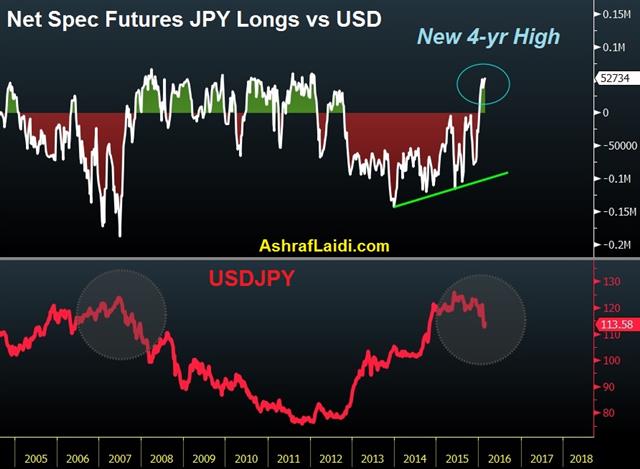
It's a leap year and that means one more day of February trading than usual. The yen has gained 6.1% this month followed by CAD up 3.2%. The worst performer was the pound as Brexit worries dominated.
It's a tough month to sum up. The early part of it included a continuation of January worries but the market has been much more selective in the past two weeks, with central banks and economic news at the forefront. US stock markets are headed for a flat month, European shares were down around 3% and Japan has fallen 7.6%.
Worries about China have certainly ebbed but they haven't disappeared. The FT reported on the weekend that China halted two outbound investment programs. The move highlights that, despite warnings otherwise, policymakers don't have a handle on why and how money is leaving the country. It also underscores their haphazard efforts to dam the flood of money leaving the country.
The G20 meetings delivered the usual platitudes. There is a growing chorus from central banks that they can't be responsible for fuelling growth but no indication that politicians anywhere are preparing grand ideas.
Early in trading, New Zealand business confidence plunged to +7.1 from +23.0. New Zealand building consents also fell 8.2% m/m. After the data, ANZ Bank changed its forecast to two RBNZ cuts this year from none.
There is an antipodean divergence unfolding. Metals prices are showing signs of recovery while dairy prices remain in a depression. That may help to buoy AUD/NZD.
Commitments of Traders
Speculative net futures trader positions as of the close on Tuesday. Net short denoted by - long by +.EUR -47K vs -48K prior JPY +53K vs +48K prior GBP -33K vs -36K prior CHF -2K vs -4K prior AUD +10K vs +3K prior CAD -37K vs -45K prior NZD -7K vs -8K prior
The biggest move is in CAD but that's no surprise given the latest round of oil strength. What stands out is the euro short. It's not particularly big, especially given how massive it's been over the past year. With the euro beginning to trend lower, there is plenty of room for momentum chasers to pile in.
| Act | Exp | Prev | GMT |
|---|---|---|---|
| Building Consents (m/m) | |||
| -8.2% | 2.3% | Feb 28 21:45 | |
New Arabic Video
تمت إضافة فيديو خاص للمشتركين "المؤشرات العالمية، التداول السعودي و النفط"




